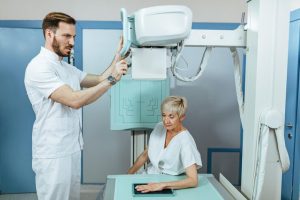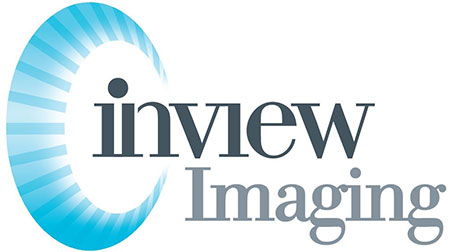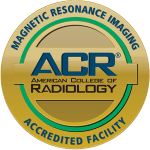-
-
When should individuals with dense breast tissue consider getting a 3D mammogram?
-
Is 3D mammography recommended for those at high risk of breast cancer?
-
How does having dense breast tissue affect the accuracy of traditional vs. 3D mammograms?
-
Are there any additional benefits associated with opting for a 3D mammogram over a conventional one?
-
Curious about when to opt for 3D mammography? We’ve got you covered with the ins and outs of this cutting-edge screening technique. From its benefits to who should consider it, doctors, people, and person, we’ll break it down for you. Plus, we’ll delve into why early detection is key in the fight against breast cancer and how 3D mammograms play a crucial role in this battle.

Ready to learn more? Scroll down for reviews of our top picks!
1. Dense Breast Tissue
Dense breast tissue contains more glandular and fibrous tissue than fatty tissue, making it challenging to spot abnormalities, especially cancer, on a mammogram. For women with dense breasts, the effectiveness of traditional mammograms can be limited due to overlapping tissues that may obscure potential issues.
3D mammography, also known as breast tomosynthesis, offers a solution for cancer by capturing multiple images from different angles. This technology enhances the clarity of breast images, aiding in the detection of lumps or other abnormalities that might be missed on standard 2D mammograms.
2. High Risk of Breast Cancer
Women with a high risk of breast cancer, due to factors like family history or genetic mutations (BRCA1/BRCA2), may benefit significantly from regular 3D mammography screenings. These advanced screenings can detect cancer abnormalities more accurately than traditional mammograms.
Early detection is crucial in improving treatment outcomes for women at high risk of breast cancer. By detecting cancer tumors at earlier stages, 3D mammography helps healthcare providers intervene promptly and effectively.
In some cases, insurance companies cover the cost of 3D mammography for women considered high risk for cancer. This financial support enables many women to access this cutting-edge cancer technology without additional financial burden.
Research shows that 3D mammography reduces false positives by up to 40% compared to conventional mammograms. This means fewer unnecessary follow-up tests and less anxiety for patients undergoing screening.
Regular screenings using 3D mammography empower women with knowledge about their breast health status, enabling them to take proactive steps towards early intervention if needed.
3. Previous Inconclusive or Ambiguous Mammogram Results
Sometimes, traditional mammograms can yield inconclusive outcomes, necessitating further tests and causing undue stress.
-
3D Mammography Clarity: 3D mammography offers sharper and more detailed images compared to standard 2D mammograms.
-
Reduced Uncertainty: With its enhanced imaging capabilities, 3D mammography lowers the chances of ambiguous results that might lead to unnecessary follow-up exams.
Final Remarks
So, whether you have dense breast tissue, a high risk of breast cancer, or previous inconclusive mammogram results, considering 3D mammography could be a game-changer for you. It offers a more detailed look at your breast health, potentially catching issues that traditional mammograms might miss. Don’t wait until it’s too late to take charge of your well-being.
Take the next step and consult with your healthcare provider about the possibility of opting for 3D mammography. Your future self will thank you for being proactive and investing in your health today.
Frequently Asked Questions
When should individuals with dense breast tissue consider getting a 3D mammogram?
If you have dense breast tissue, it’s recommended to opt for a 3D mammogram as it can provide clearer images compared to traditional mammograms. The detailed images help in detecting abnormalities that may be hidden in dense breast tissue.
Is 3D mammography recommended for those at high risk of breast cancer?
Yes, individuals at high risk of breast cancer are often advised to undergo 3D mammography. This advanced screening method offers better detection capabilities, especially for those with an increased risk due to factors like family history or genetic predisposition.
Why is it suggested to opt for a 3D mammogram after previous inconclusive or ambiguous results from a traditional mammogram?
In cases where earlier mammograms yield inconclusive or unclear results, transitioning to a 3D mammogram can offer more precise imaging. The multiple angles and layers captured by the 3D technology enhance the chances of identifying any potential abnormalities accurately.
How does having dense breast tissue affect the accuracy of traditional vs. standard 2D mammogram images? 3D mammograms?
Traditional mammograms may encounter challenges when dealing with dense breast tissue since overlapping structures can obscure findings. On the other hand, using 3D technology allows radiologists to examine individual slices of the breast, improving accuracy even in cases of denser breasts.
Are there any additional benefits associated with opting for a 3D mammogram over traditional mammography?
Beyond improved accuracy in detecting abnormalities, another advantage is reduced call-back rates for further testing. With clearer images provided by the detailed layers of information from a 3D scan, unnecessary follow-up appointments due to false alarms are minimized.


